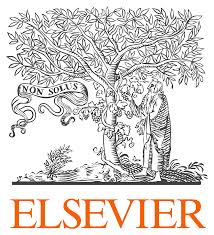Location
What is ScienceDirect
Elsevier’s leading platform of peer-reviewed scholarly literature.
University libraries and institutions offer ScienceDirect access to their communities of researchers.
Researchers, teachers, students, healthcare and information professionals use ScienceDirect to improve the way they search, discover, read, understand and share scholarly research.
Members:
Resources
Displaying 156 - 160 of 284Acceptance studies in the field of land use—A critical and systematic review to advance the conceptualization of acceptance and acceptability
Despite the increasing importance of studies dealing with acceptance in the field of land use, few theoretical-conceptual reflections and reviews have been published. To address this gap, this paper offers a critical and systematic review of recent literature regarding acceptance and land use. Our aim is to synthesise the contributions of these publications in order to advance scientific debate on this topic. The data set consists of 132 peer-reviewed journal articles and book chapters and is dominated by empirical papers (mostly quantitative studies) and European case studies.
Modelling the production impacts of a widespread conversion to organic agriculture in England and Wales
We assess the production impacts of a 100% conversion to organic agriculture in England and Wales using a large-scale linear programming model. The model includes a range of typical farm structures, scaled up across the available land area, with the objective of maximising food production. The effects of soil and rainfall, nitrogen (N) supply/offtake and livestock feed demand are accounted for. Results reveal major reductions in wheat and barley production, whilst the production of minor cereals such as oats and rye increase.
Modelled impacts of policies and climate change on land use and water quality in Austria
Climate change is a major driver of land use with implications for the quality and quantity of water resources. We apply a novel integrated impact modelling framework (IIMF) to analyze climate change impacts until 2040 and stakeholder driven scenarios on water protection policies for sustainable management of land and water resources in Austria. The IIMF mainly consists of the sequentially linked bio-physical process model EPIC, the regional land use optimization model PASMA[grid], the quantitative precipitation/runoff TUWmodel, and the nutrient emission model MONERIS.
Recent transformations of land-use and land-cover dynamics across different deforestation frontiers in the Brazilian Amazon
After forest governance reforms by the Brazilian government, Amazon deforestation rates dropped by almost 80% between 2004 and 2012. Since then, however, deforestation has slowly increased again, casting doubts on the long-term sustainability of past conservation policy achievements. Clearly, deforestation rates and the associated local drivers of land-use and land-cover change differ considerably across the region, and adapting public policies to dynamic local contexts and actor constellations remains a major challenge for decision-makers.
Exploring the socioeconomic and ecological consequences of cash crop cultivation for policy implications
Cash crops have kept expanding at an accelerating rate across the globe during the last decades. It therefore requires elaborate efforts to examine the socioeconomic and ecological consequences of cash crop cultivation. With a case of the Hangzhou region in subtropical China, this paper investigated the dynamic patterns of four cash crop types (tea, fruit, mulberry and nursery) at town level by using aerial photos; and then quantified the subsequent socioeconomic and ecological consequences using spatial regression.


